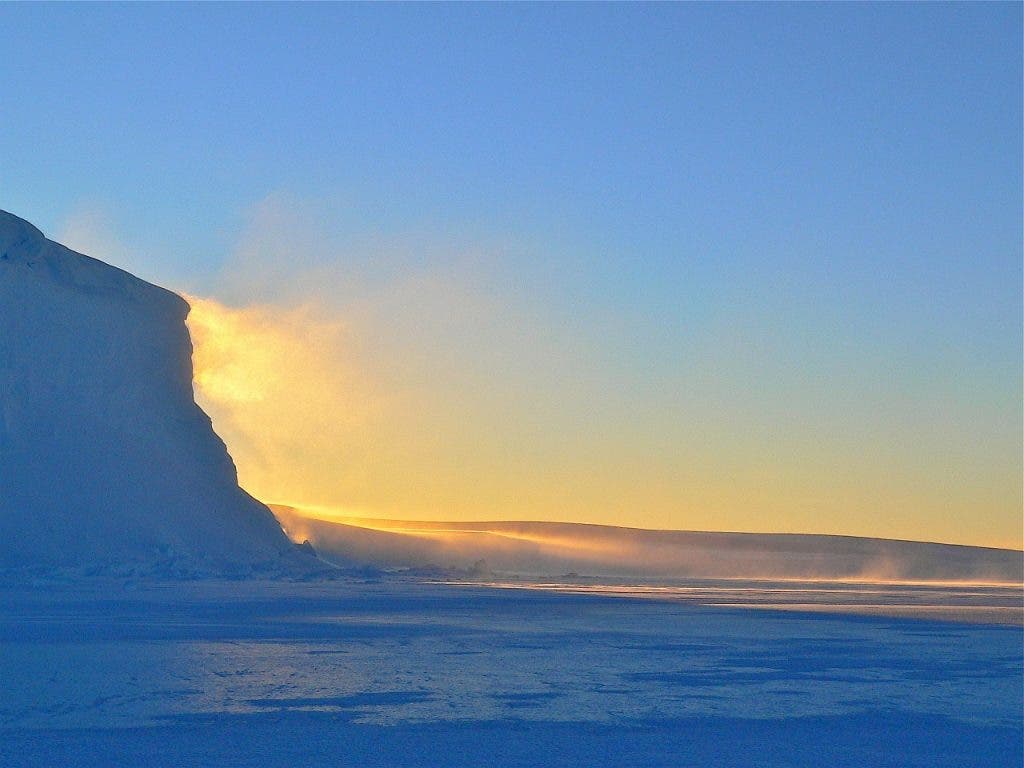
A study of ice cores samples drilled from Antarctica decades ago has confirmed a long-standing assumption: as the planet warms, the biosphere releases more CO2 in a positive feedback loop.
The findings are extremely consequential for a lot of reasons. First of all, carbon budgets — the amount of greenhouse emissions governments can emit before passing a one degree Celsius warming threshold, for instance — need to be revised. Secondly, it reinforces the idea that the biosphere is a complex web whose interactions are difficult to sum up. We’re often surprised and we often underestimate, which is all the more reason to start serious climate change mitigation now.
Sweating CO2
The landmark study was made by a group of international researchers, among them Australian climate scientist Dr David Etheridge who has already participated in several ice core drilling expeditions. These sort of field studies are no walk in the park as researchers often have to battle against freezing temperatures ranging anywhere from minus 5 C to minus 40, as well as sickening winds.
The Nature Geoscience paper, however, made more use of previous ice core samples drilled from the 1980s well into the late 2000s. It is by peering inside the trapped gas bubbles of the ancient ice that scientists learn about glacial-interglacial cycles, changing atmospheric carbon dioxide levels, and climate stability over the last 10,000 years. Of particular interested were those gas bubbles trapped in the ice during the Little Ice Age (LIA), a brief period of global cooling which lasted for 250 years since the early 1500s. Volcano activity and a slightly weaker sun triggered this event which saw the world cool by around half a degree Celsius.
What was striking about this lil’ ice age was that the amount of carbon dioxide in the atmosphere also dropped in tune with the temperature. This oddity has been often pinned on less intense farming activities around this time due to wars and pandemics, but many were left unconvinced.
Now, analysis of carbonyl sulfide compounds from the ice cores suggests a direct biological relationship between the biosphere’s own carbon emissions and atmospheric temperatures. This looks like a more reasonable explanation.
Carbonyl sulfide concentration is linked to changes in gross primary production, namely the amount of chemical energy as biomass that primary producers create in a given length of time. In other words, when this chemical in the atmosphere jumps, it signals that plants are storing more carbon.
By studying the fluctuations of carbonyl sulfide compounds, the researchers came to the conclusion that increased temperatures are causing plants and soil to release more CO2, which causes more warming. That’s why feedback loops can be extremely dangerous once outputs pass a critical threshold which breaks equilibrium. And yes, plants do release CO2 — all the time actually as a metabolic byproduct of respiration.
Plants respire all the time because their cells need energy to stay alive, but plants can only photosynthesise when they are in the light. That’s why during daytime, when there’s light to trigger photosynthesis, plants turn CO2 into molecular oxygen, among other things. During the night, however, plants do not have enough energy (sunlight) to fix carbon, but need to respire to stay alive hence they become CO2 emitters.
Of course, the vast majority of plants are net fixers of CO2 and producers of O2. What the Nature paper suggests is that this balance is shifting towards the CO2 producing side as the planet warms. In regard to soil, it’s well established that cooler soil fixes more carbon.
“More warming, leads to more CO2 from the terrestrial biosphere, which leads to more warming,” Etheridge told The Guardian.
“We show that a decrease in gross primary production and a larger decrease in ecosystem respiration is the most likely explanation for the decrease in atmospheric CO2 and increase in atmospheric carbonyl sulfide concentrations. Therefore, temperature change, not vegetation re-growth, was the main cause of the increased terrestrial carbon storage,” the papers authors wrote.
At the moment, global CO2 emissions are rising at an unprecedented rate. It’s very likely that neither of us will get to see CO2 global average readings below 400 parts per million during our lifetimes. Again, the urgency of tackling climate change hasn’t been more real than ever.
Was this helpful?



